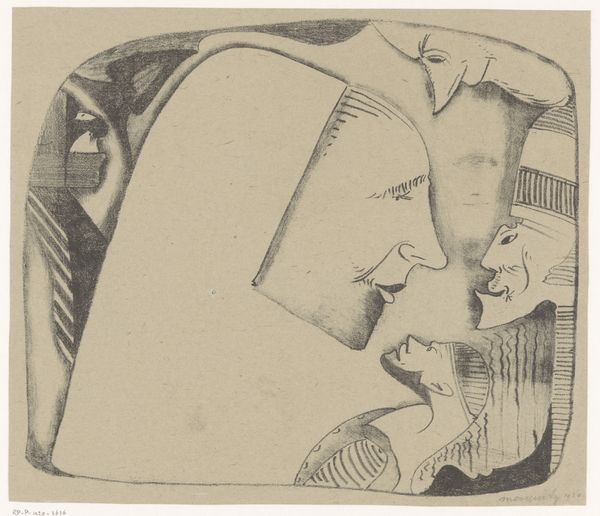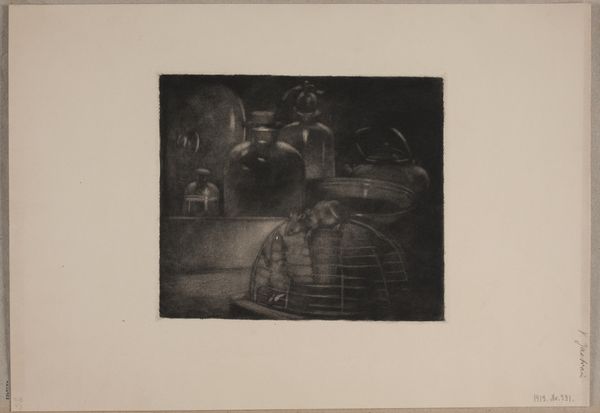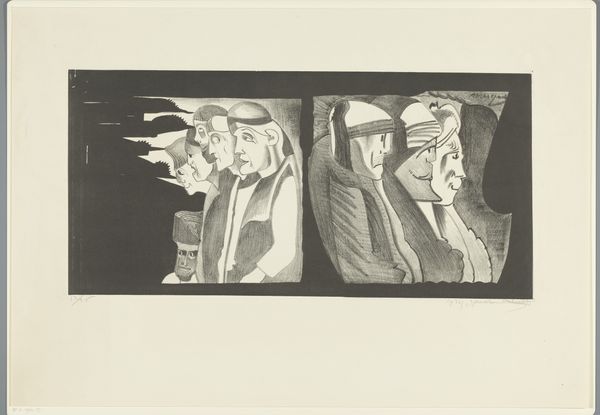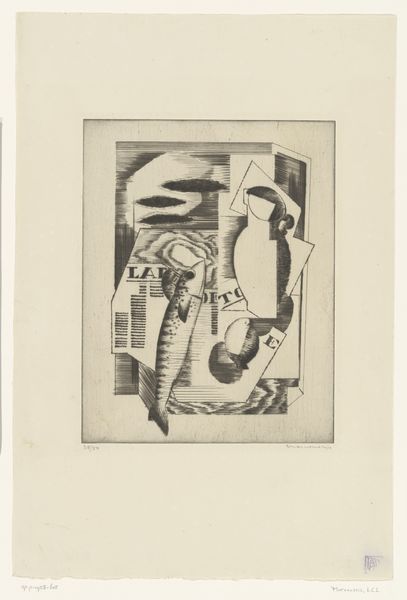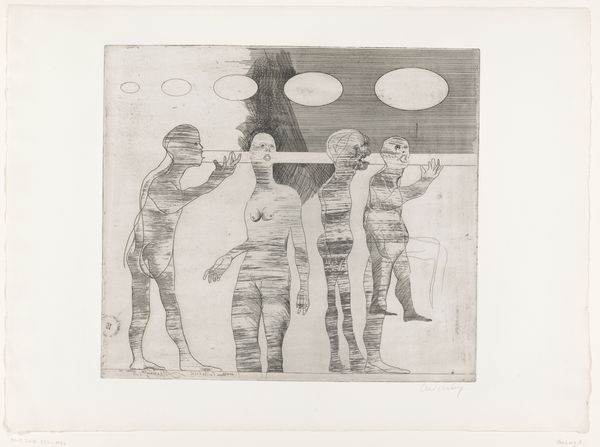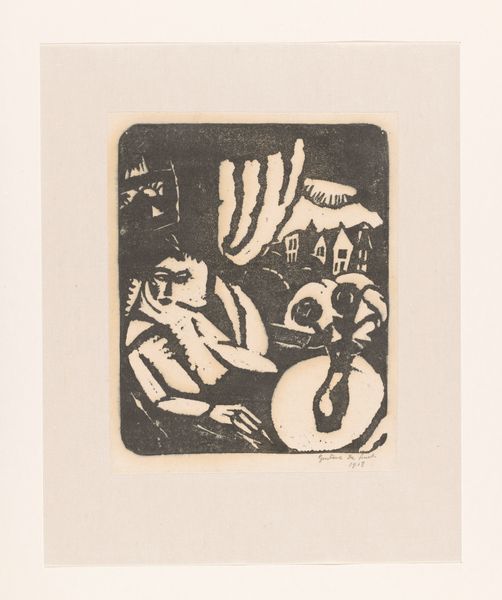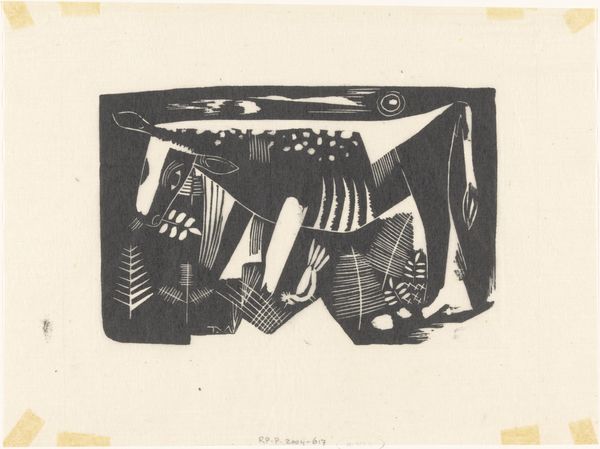
print, etching, paper
#
portrait
# print
#
etching
#
figuration
#
paper
#
geometric
#
modernism
Dimensions: height 172 mm, width 240 mm, height 320 mm, width 478 mm
Copyright: Rijks Museum: Open Domain
Curator: What a fascinating piece. This is "Faire le grand tour du monde," or "Taking a Trip Around the World," a print made before 1958 by Aat Verhoog. It’s an etching on paper, currently held here at the Rijksmuseum. Editor: It's quite striking! I'm immediately drawn to the geometric stylization of the figures. They feel both ancient and modern simultaneously. The textures achieved through the etching process give it a palpable depth. Curator: Exactly! The stark contrasts and heavy lines contribute to the artwork's strong presence. Looking at Verhoog’s printmaking process, the etching technique allowed for intricate details. The very act of producing multiple impressions connects directly to accessibility, placing artwork outside the realm of unique, precious objects. Editor: I agree. And what does the title "Taking a Trip Around the World" suggest? Is it about the aspirations and desires of the people depicted, or perhaps a commentary on post-war travel and exploration becoming more accessible to wider populations? What audiences and consumers does such imagery hope to reach and connect with, especially during its time? Curator: Those are great questions. I’m particularly interested in the headwear depicted, each has a different surface materiality, which suggests it is part of the trip, almost artifacts. I would say that its status as a print allows it to carry ideas and aspirations of globalism outside the high-art circuits. It feels very different from painting, or sculpture in that sense. Editor: Indeed. Prints possess that intrinsic link to broader communication and democratic participation, in art reception at least. I am still wondering if Verhoog meant this image to reflect, or maybe even critique, who has access to mobility and international culture. Curator: It could certainly be interpreted that way, especially considering the relatively abstract, almost masked, features of the figures. There is a sense of constructed identity or role-playing there, what would it mean to 'become' a world traveller, visually and socially? Editor: Ultimately, what intrigues me is how this work engages with the theme of travel and its representation in the mid-20th century. I keep reflecting on how this print invites contemplation on who gets to travel, who consumes imagery, and the underlying socio-economic frameworks that enable these processes. Curator: For me, it really showcases how printmaking enables a democratization of imagery and narratives. It allows ideas about travel and global engagement to be accessible to a broader audience beyond the elite circles of the art world.
Comments
No comments
Be the first to comment and join the conversation on the ultimate creative platform.

